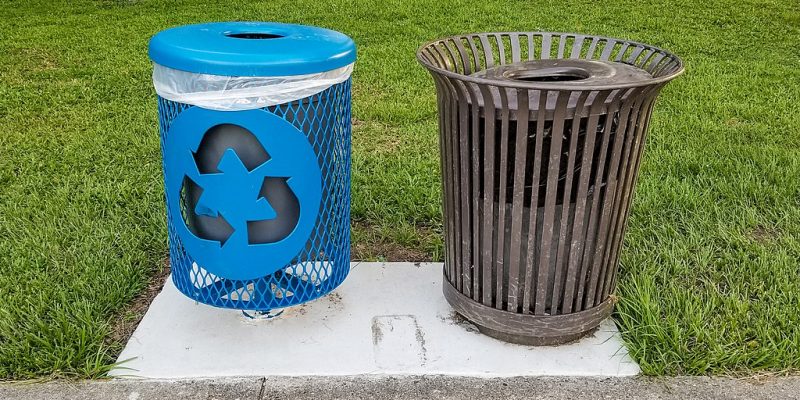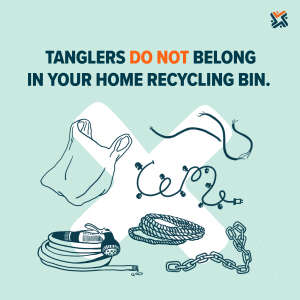

Photo by Recycle Right NY
Garbage – we sure do make a lot of it! As our consumption continues to grow exponentially, we are finding fewer places to put all our garbage, so it ends up, eventually, where we least want it, in our drinking water and in the ocean. What can we do? Solutions people employ to try and cut down on garbage are: use less, select products that have environmentally friendly packaging, are durable, and can be recycled easily. When done right, recycling reduces the constant stream of waste we generate. The process of recycling metals, plastics, glass, etc., for another use often begins with collection and sorting. Caution: putting items that cannot be recycled in the same bins as recyclable items causes problems and extra work by the workers at the dump, damage to sorting machinery, and reduces the value of the return the town receives on the sale of recyclable materials after sorting losses.
Angelina Brandt, Ulster County Resource Recovery Agency (UCRRA) Sustainability Director, recently gave a “Plastic Free July” talk hosted by the Gardiner ECC at the Gardiner Library, where she warned against “wish-cycling,” which occurs when people put an item into the recycling stream not knowing if it can be recycled but hoping it will be. Wishing does not make it so: Certain shapes and materials cannot be recycled and, in fact, make for more work and can be dangerous to workers and machinery. Items such as plastic bags, electrical cords, chains, rope, twine, ribbon, and hoses clog and damage machinery. At the same time, broken glass, mirrors, sharps (needles, healthcare waste), ceramics, and light bulbs can injure workers and contaminate other materials ruining them for recycling. Some other items not suitable for recycling are food-stained pizza boxes, straws, pouches, balloons, black and clear food service containers, rigid plastics (like toys or laundry hampers), auto parts, and baskets.
Brandt also cautioned that plastic films are difficult to sort and clog machinery, saying, “If it’s a bag and you can stretch it without breaking it,” it’s plastic film.” Many food product bags, shopping bags, sandwich bags, produce bags, bubble wrap, and plastic shrink wrap are considered “plastic film.” NY State Plastic Bag Reduction, Reuse and Recycling Law (the “Bag Law”) requires grocery and retail stores that have five or more locations to have a collection container for the plastic film (like the one in front of TOPS in New Paltz). When clean and dry, plastic film is now “returned to retailer” and is not put into single and dual stream recycling.
Size matters in recycling too. Items smaller than a tennis ball do not sort; if they can’t be sorted, they probably won’t be recycled. Here’s a tip: Keep caps on bottles and lids on containers. In fact, if you use a container with a lid to collect recyclable items too small to sort and put the lid back on, the smaller items will not be loose, and thus can be sorted and recycled without clogging the sorting machine.
There are many myths about recycling, some of which are debunked by RecycleRight NY at recyclerightny.org. For example, an item with a recycle symbol is universally recyclable. This is not true. What can be recycled from your waste depends on the equipment and processes at your local recycling facility- not all facilities are the same. If you use a bin service, check with your service provider to know which plastic items and other recyclables you may place in your bins. There is an abundance of useful recycling and waste management information on the UCRRA website (ucrra.org), including a “Recyclopedia.” Feel free to send them any questions. One universal recycling rule is that all recyclables should be clean and dry before putting them into single stream bins or separated for dual stream recycling.
Recycling is necessary and required by NY state law and by Ulster County Materials Management Legislation. Though it is not difficult to do, it does require discipline and commitment. Know that in Ulster County and in NY, there are good resources and great people to help us reshape how we waste and how we Recycle Right.
For more info:
